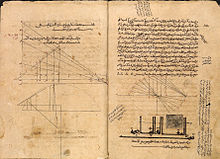This article has multiple issues. Please help improve it or discuss these issues on the talk page . (Learn how and when to remove these messages)
|
This timeline of science and engineering in the Muslim world covers the time period from the eighth century AD to the introduction of European science to the Muslim world in the nineteenth century. All year dates are given according to the Gregorian calendar except where noted.

